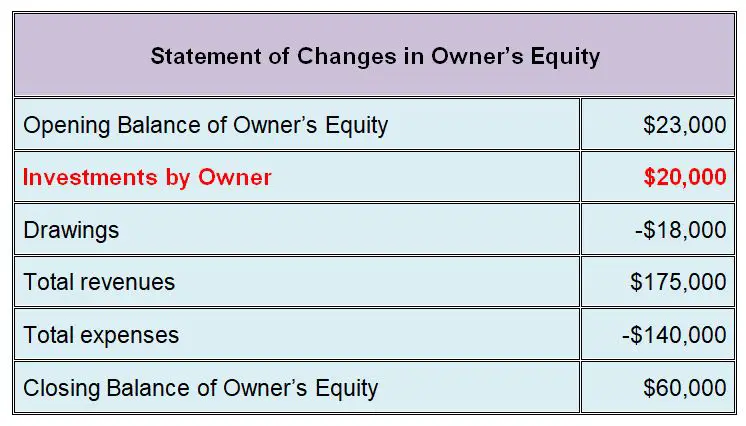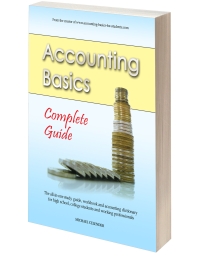Accounting Equation Exercise:
Fill in the Blank
by Sinthu
(Canada)
Before you begin: For purposes of testing and exams it's important to make sure you not only get the questions right but are completing them at the right speed. Use a watch or clock to time yourself for this exercise.
Difficulty Rating:
Beginner --> Intermediate
Time limit:
10 minutes
Question:
The summaries of balance sheet and income statement data follow.Beginning of year:
Total assets $85,000
Total liabilities $62,000
Total owner’s equity ?
End of year:
Total assets $110,000
Total liabilities ?
Total owner’s equity $60,000
Changes during year in owner’s equity:
Investments by owner ?
Drawings $18,000
Total revenues $175,000
Total expenses $140,000
Required: Calculate the missing items above.
Solution:
Beginning of year:If Assets = Liabilities + Owners Equity
then
Owners Equity = Assets - Liabilities
= $85,000 - $62,000
= $23,000 Owners Equity
End of year:
If Assets = Liabilities + Owners Equity
then
Liabilities = Assets - Owners Equity
= $110,000 - $60,000
= $50,000 Liabilities

Changes during the year in owner’s equity:
For this final part of the question we need to use the calculation of owner’s equity at the end of the year starting with equity at the beginning of the year plus/minus changes during the year
Opening Balance $23,000
Investments by owner ?
Drawings - $18,000
Total revenues + $175,000
Total expenses - $140,000
Closing Balance $60,000
To solve this problem we're going to take the statement of owner's equity with all the figures above and put them in a formula:
Closing Balance = Opening Balance + Investments by Owner - Drawings + Revenues - Expenses
Switching around this equation to make "Investments by Owner" (capital) the subject, we then get:
Investments by Owner = Closing Balance - Opening Balance + Drawings - Revenues + Expenses
= $60,000 - $23,000 + $18,000 - $175,000 + $140,000
= $20,000 Investments by Owner
Here is how a complete statement of owner's equity would look:

So, what did you think of this accounting equation exercise? Did you try it, and if so, how did you do? Leave us a comment further below.
If you had some difficulty with this exercise, don't worry! Check out some of the related tutorials and questions further below.
Best,
Michael Celender
Related Questions & Tutorials:
- Owner's Equity Question: Fill in the Blank
- More Accounting Equation Questions and Answers
- Tutorial on the Basic Accounting Equation
- Tutorial on the Statement of Owners Equity
Return to our main page of Basic Accounting Questions
Comments for Accounting Equation Exercise:
|
||
|
||
|
||
© Copyright 2009-2023 Michael Celender. All Rights Reserved.
Click here for Privacy Policy.



